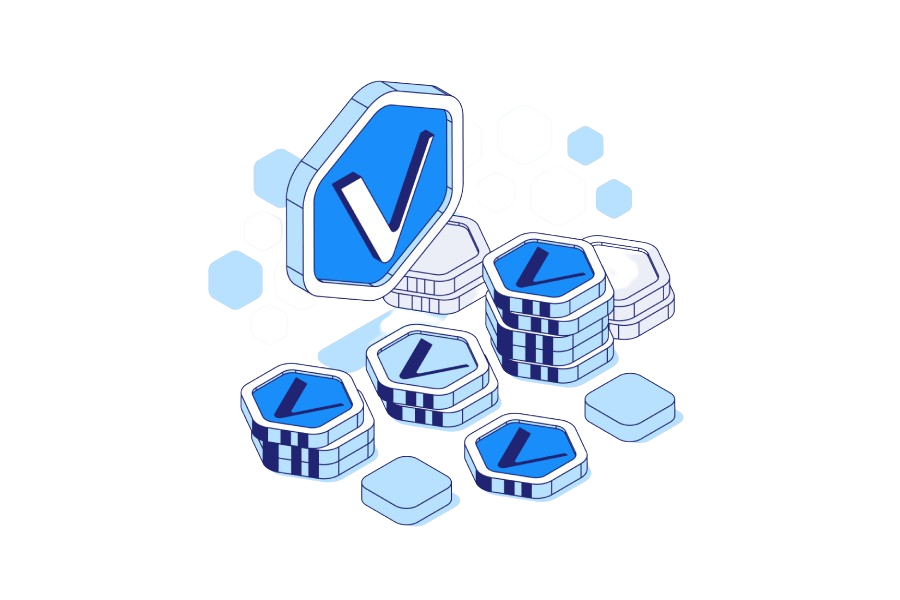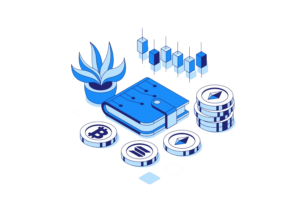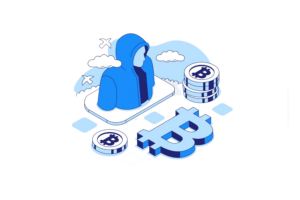It offers crucial features such as transparency, a decentralized system, and immutability which can improve how stakeholders share data within supply chains. With VeChain (VET) – the native virtual currency of the platform – users are able to transact directly with one another – no third-party required.
Key Takeaways
- VeChain is a smart-contract blockchain platform that aims to improve business supply chain management through distributed ledger technology.
- It offers crucial features such as transparency, decentralization and immutability which can improve how stakeholders share data within supply chains.
- VeChain (VET) is the native virtual currency of the platform, allowing users to transact directly with one another without third-party involvement.
- Founded in 2015 by Sunny Lu, it has made revolutionary changes over time – upgrading from Ethereum’s VEN token to its own blockchain named ‘VeChainThor’.
- Real-world applications for VeChain range from tracking shipped goods and verifying luxury items’ authenticity to supporting initial coin offerings (ICOs).
- Unique features include two native tokens following VIP180 standard & proof-of-authority consensus mechanism requiring minimal computing power compared to other blockchains.
- Staking VET allows users to earn rewards while supporting network consensus in return for holding their funds over time.
What is VeChain (VET)?
VeChain is an innovative public blockchain platform that helps businesses benefit from the advantages of distributed ledgers. It offers features like a decentralized system, transparency, immutability and automation to streamline supply chain visibility among participants. Transactions can be conducted directly without third parties.
VeChain is an enterprise-level blockchain network providing innovative meta-transaction features such as multi-party payment, controllable transaction lifecycle, and multifaceted transactions with dependencies. Its efficient proof of authority consensus mechanism adds extra security via integrated smart contracts while requiring minimal computing power.
The Steering Committee monitors the VeChain Ecosystem through on-chain governance that uses role-based voting for increased organizational clarity. Their dual token economy utilizes VET to create VTHO tokens which can be used for online payments or remittances between users and even cover gas costs & fees related to developing smart contracts.

History of VeChain: Who is behind VeChain?
VeChain was founded in 2015 by Sunny Lu. It was initially a subsidiary of the blockchain company Bitse. When VeChain launched, its whitepaper outlined goals that include disrupting the supply chain industry and making supply chains more efficient. The whitepaper summarizes Vechain’s mission as enabling “the blockchain community, business owners, enterprises, governments, or any other individual to move their business activities to blockchain effortlessly.”
VeChain began operations in 2016, introduced its mainnet VeChain Thor in 2018, and announced enterprise NFTs in May 2021. VeChain has also introduced the VeVote platform, which allows users to vote on potential changes and updates to the platform.
More recently, Vechain unveiled VeUSD, the first native stablecoin on the VeChain blockchain. It is pegged to the US dollar and is a VIP-180 token, a subset of the ERC-20 standard.
VeChain has made revolutionary changes to its core platform over the years – upgrading from Ethereum’s VEN token to its own blockchain named ‘VeChainThor’, or VET. Recognizing this potential, some formidable names have already partnered up with them, including Microsoft, PWC, BMW Renault & Volkswagen who are seeing real practical applications manifested through VechainThors capabilities
How does VeChain work?
In the business world, companies primarily use VeChain to track and verify products as they move through the supply chain. Vechain uses smart chips or radio frequency identification tags to send information about a product to the blockchain network in real-time.
There are many useful, real-world applications for this technology. For example, VeChain chips are used to verify the authenticity of luxury goods like handbags, while VeChain technology can help grocery stores track food products and quickly identify ones that need to be recalled if there is a threat of contamination or food-borne illness.
Another example is the ability of automotive manufacturers to use VeChain to store data on specific cars, which allows future buyers to verify information such as the accuracy of the mileage.
VeChain uses the high-speed VeChainThor distributed ledger blockchain, which is designed to host enterprise-scale dApps.A unique aspect of VeChain Thor, is that it uses a consensus algorithm called proof-of-authority, which relies on masternodes to validate crypto transactions.
Masternode operators oversee the protocol, maintain VeChainThor’s governance policy, and securely execute smart contracts. Masternodes operators are selected by the VeChain Foundation and the VeChain community after passing rigorous Know Your Customer (KYC) checks.
Users with one million VET tokens and KYC are assigned 30% of all votes, while those with one million tokens and no KYC are allotted 20%.
Vechain uses a two-token economy system. VeChainThor is used to pay for gas, including transaction fees, in the VeChain environment and VeChain Token is the main transactional unit.
The primary Vechain product is VeChain ToolChain, a platform that helps businesses of all sizes use blockchain-powered solutions through blockchain-as-a-service (BaaS), platform-as-a-service (PaaS), and software-as-a-service (SaaS) solutions.
Real-World Applications for VeChain
VeChain has a wide range of real-world applications, from tracking shipped goods to supporting initial coin offerings (ICOs). For example, the platform can be used to track freight shipments as they make their way across the globe. By leveraging VeChain’s blockchain technology, companies can accurately and securely monitor each shipment’s progress, ensuring that products are delivered on time and in full. Additionally, this feature also offers greater transparency when it comes to tracing and verifying the source of goods.
Moreover, VeChain also provides support for ICOs by allowing companies to issue tokens on its network. This enables startups and enterprises alike to easily create their own digital currencies which can then be sold or exchanged for existing digital currencies such as Bitcoin or Ethereum. Furthermore, VeChain features smart contract capabilities which allow users to set predetermined conditions for transactions made with these tokens. This eliminates the need for manual input while still ensuring that all trades are secure and compliant with local regulations.
What makes VeChain unique?
There are several features that make Vechain unique compared to other blockchains.
- VeChain has two native tokens, while most blockchains have one. VeChain separated them to ensure stability for transaction fees.
- Its currencies follow the VIP180 standard, which was developed specifically for VeChain and is similar to Ethereum’s ERC-20 tokens.
- The VeChainThor blockchain uses the unique proof-of-authority consensus mechanism, which is less energy-intensive and work-intensive than proof-of-work
Can VeChain be mined?
No, Vechain can’t be mined. Because it runs on a proof-of-authority mechanism, a smaller number of computers do the work to validate and operate the network. However, the token can be bought from major cryptocurrency exchanges and can be stored in a VeChain wallet, or a hardware wallet like Ledger.
VeChain is a smart-contract blockchain that offers blockchain-powered solutions for businesses such as a product that tracks the movement of shipped goods. Vechain’s smart chips can be used to send information about a product to the blockchain network in real time. Its goals include making it easier for companies of all sizes to incorporate blockchain solutions into their processes.
VeChain has two tokens, VET and VTHO, and recently introduced VeUSD a stablecoin pegged to the US dollar.
Transactions on DApps on the VeChain blockchain use VET, while VTHO is used to power transactions. The platform supports DApps and nonfungible tokens and there are plans for it to become a leader in Internet of Things transactions and initial coin offerings.
VeChain has seen immense growth since its launch in 2015 and now counts many big-name companies among its partnerships.
Introducing VeVote allowed users to vote on changes and updates to the platform – for example, in 2021 the network voted to lower fees, a change experts say will bode well for those looking to use VeChain as a currency.
How to buy VeChain?
Looking to dip your toe into the cryptocurrency market with VeChain (VET)? VET is now widely available on many cryptocurrency exchanges.
Once you have an account set up and funded, choose from one of two wallets: 1) An external self-custody wallet for maximum security or 2) The Thor wallet which has been specifically created by Vechain for Android & iOS devices.
However, keep in mind that MetaMask won’t work. It’s incompatible as VET isn’t built on the Ethereum blockchain – cryptocurrency transactions for VET take place on its own blockchain!
Can you make passive income with VeChain?
It is indeed possible to make passive income with VeChain (VET). Through its unique two-token system, users are able to stake their tokens in order to receive rewards and support the consensus of the network. By staking VET tokens, users earn rewards in the form of VTHO (VeThor Token) which can be used for different purposes such as online payments, remittances, and transaction fees. Users are also able to use the rewards from their VTHO tokens to cover gas costs and smart contract fees.
One of the key benefits of staking VET tokens is that it allows users to benefit from a deflationary tokenomics model; 70% of all transaction fees are burned while 30% goes towards masternode operators as a reward for supporting network consensus. This helps manage market speculation, volatility, and stable operating costs with confidence. Moreover, many businesses have partnered up with VeChain in order to improve transparency in their supply chain management and other areas through the utilization of blockchain technology. As such, there is an increasing demand for VET tokens on cryptocurrency exchanges which can drive up their price over time – allowing users who have staked their tokens to generate passive income while supporting the growth of the network.
Users who opt for low code deployment platforms or food safety track & trace systems provided by VeChain Toolchain will be able to enjoy discounts on products or services offered by these organizations – thus creating additional opportunities for passive income. Staking VET makes it possible to earn passive income while also contributing towards sustaining a reliable blockchain network.
Does VeChain have NFTs?
Yes, indeed! In fact, VeChain’s NFT ecosystem is booming! Through VeSea, their decentralized marketplace for buying and selling digital collectibles, users can access collections like VeKings and Paper Project. World of V also offers support for minting new cryptocurrency projects via its launchpad while allowing owners the chance to stake tokens in a creator-focused ecosystem. No gas fees required here – just a 2.5% trading fee on everything you buy or sell.
Is VeChain a good investment?
Crypto market data shows VeChain (VET) is down significantly since its launch 5 years ago. It’s worth noting that the cryptocurrency market in general has seen a lot of volatility during that time.
The decoupling of crypto assets from traditional investment vehicles and altcoins from Bitcoin would be likely to have an impact on digital currency prices going forward, which is something any savvy investor should keep in mind.
VeChain supporters would argue that real-world use cases across many industries could lead to growth in VET’s value over time. Many factors have the potential to contribute to VET’s growth including new partnerships with organizations outside China. It is possible that an increase in counterfeit markets might also create more demand for such products as VeChain.
With its two-token system and partnerships across industries, VeChain has some promising features that could make it a successful long-term project.






